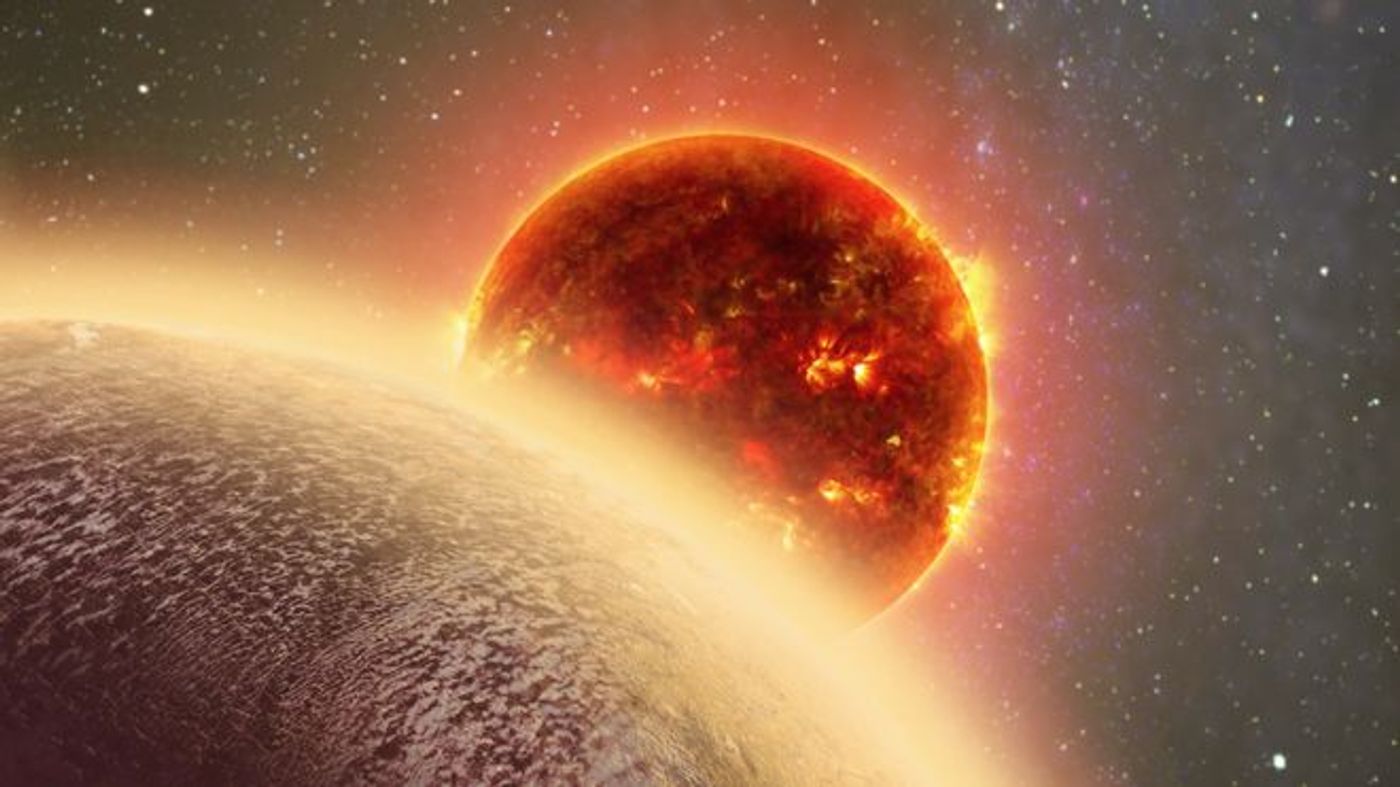Atmosphere Detected on Earth-Like Exoplanet
When scientists look for exoplanets, one type that stands out the most are terrestrial Earth-like exoplanets. Unlike gassy exoplanets, this type is the most likely to support life forms, so long as they reside within the host star’s habitable zone.
On the other hand, just because an Earth-like exoplanet exists in a star’s habitable zone doesn’t necessarily mean that it supports life. There are other factors involved too, such as having a livable atmosphere, supporting liquid water, etc.
Astronomers may have made a huge break in their latest discovery, in which an Earth-like exoplanet dubbed GJ 1132b exhibits a thick layer of gasses above its surface that makes for a brilliant atmosphere. The findings appear in The Astronomical Journal.
Image Credit: Dana Berry
“While this is not the detection of life on another planet, it's an important step in the right direction: the detection of an atmosphere around the super-Earth GJ 1132b marks the first time that an atmosphere has been detected around an Earth-like planet other than Earth itself,” lead author Dr John Southworth from Keele University in the UK explained.
Related: An Earth-like exoplanet has been discovered orbiting our closest stellar neighbor
GJ 1132b orbits a low-mass red dwarf star that’s dimmer than our own Sun around 32 light years away from Earth in the Vela constellation. It’s known as a super-Earth because its radius is almost 1.4x larger than the Earth’s is, and the mass is about 1.6x more.
While discovering that the planet has an atmosphere is quite an exciting break indeed, it turns out that there might not be too much reason for cheer. The atmosphere is much unlike the Earth’s, and more importantly, the exoplanet would most likely be too hot to support life. Estimates place the planet’s temperature at nearly 700º Fahrenheit.
The atmosphere was discovered as astronomers were observing the exoplanet through the European Southern Observatory in Chile in different wavelengths. As the exoplanet passed its host star, they had noticed some of the light was getting blocked just in between the surface of the planet and the space ahead of the planet; this was indicative of a thick gassy atmosphere.
Because of just how thick it is, researchers estimate that it could be an atmosphere comprised of steam and/or methane.
Related: Exoplanets orbiting red dwarf stars are unlikely to support life
“One possibility is that it is a 'water world' with an atmosphere of hot steam,” Southworth continued. “What we have shown is that planets around low mass stars can have atmospheres and because there are so many of those in the Universe, it makes it that much more likely that one might have life.”
Even though GJ 1132b is likely inhabitable, the event that researchers were able to detect an atmosphere from light activity and chemical properties paves the way for inspiration for astronomers to continue their search for more Earth-like exoplanets that might have rich atmospheres.
Given that loads of Earth-like exoplanets have been discovered as of late, such as those in the highly-intriguing TRAPPIST-1 system, this added motivation is just what we need to continue the search for extraterrestrial life despite always coming up empty with each attempt to find it.
Source: Science Alert









